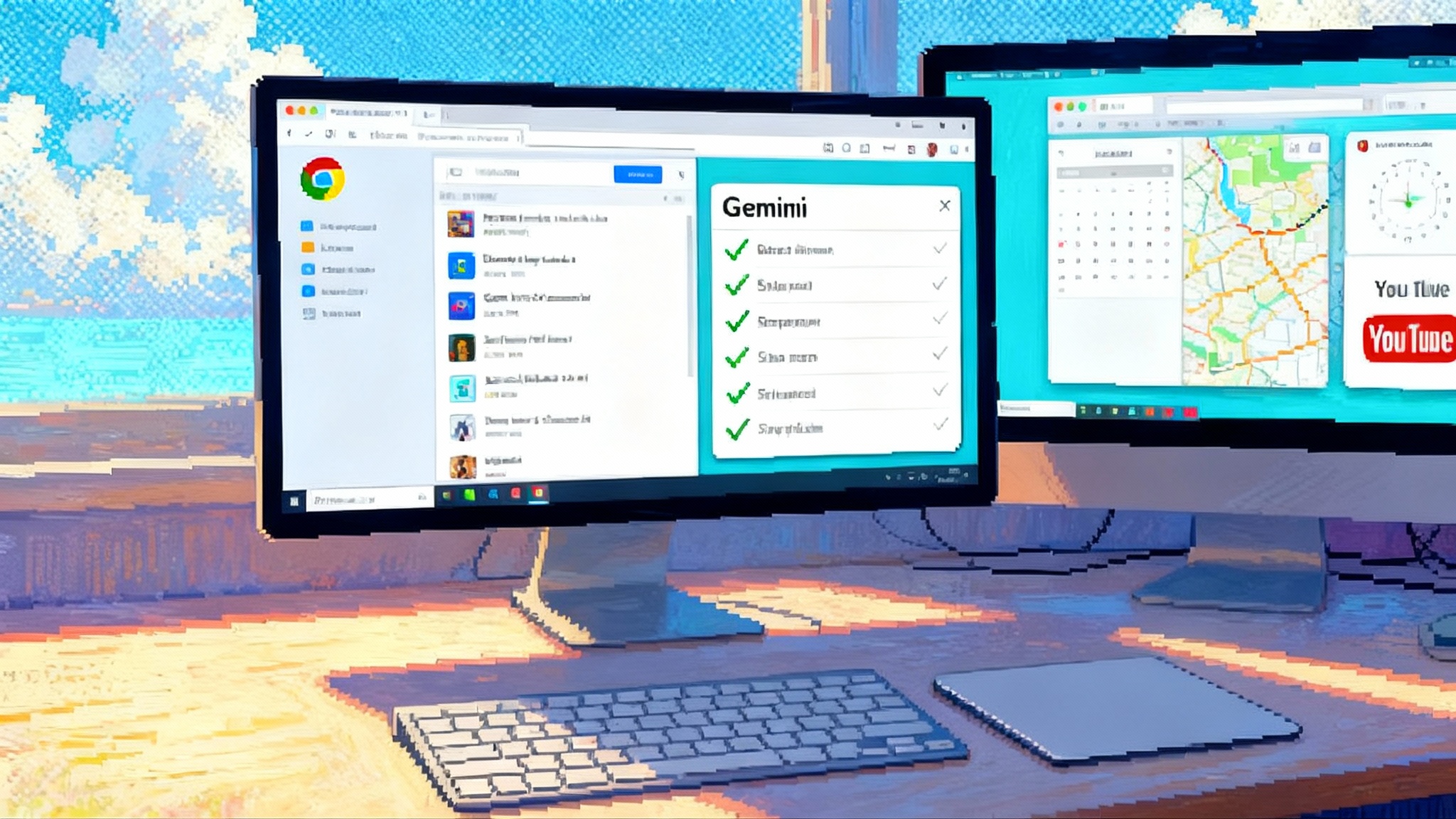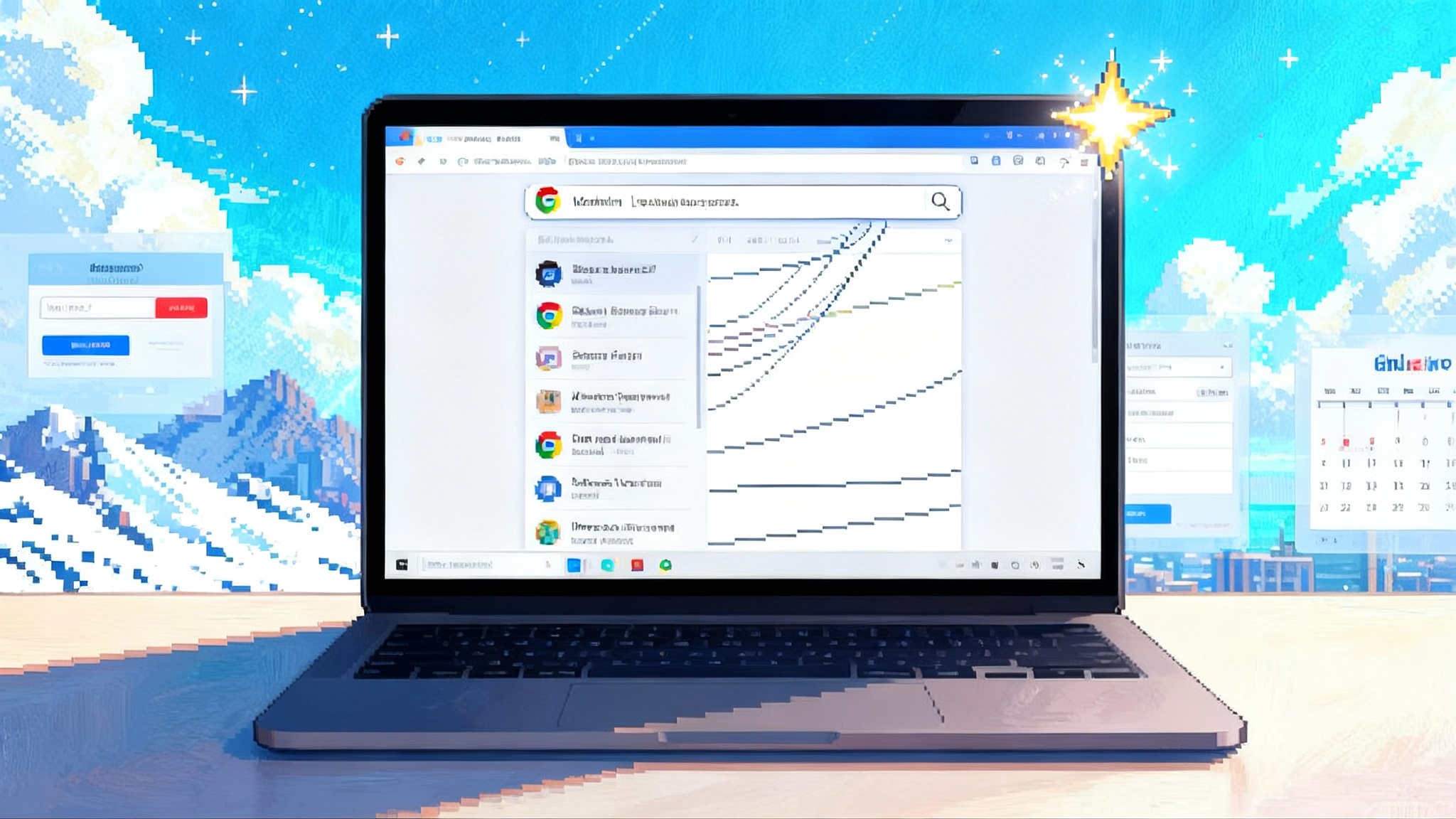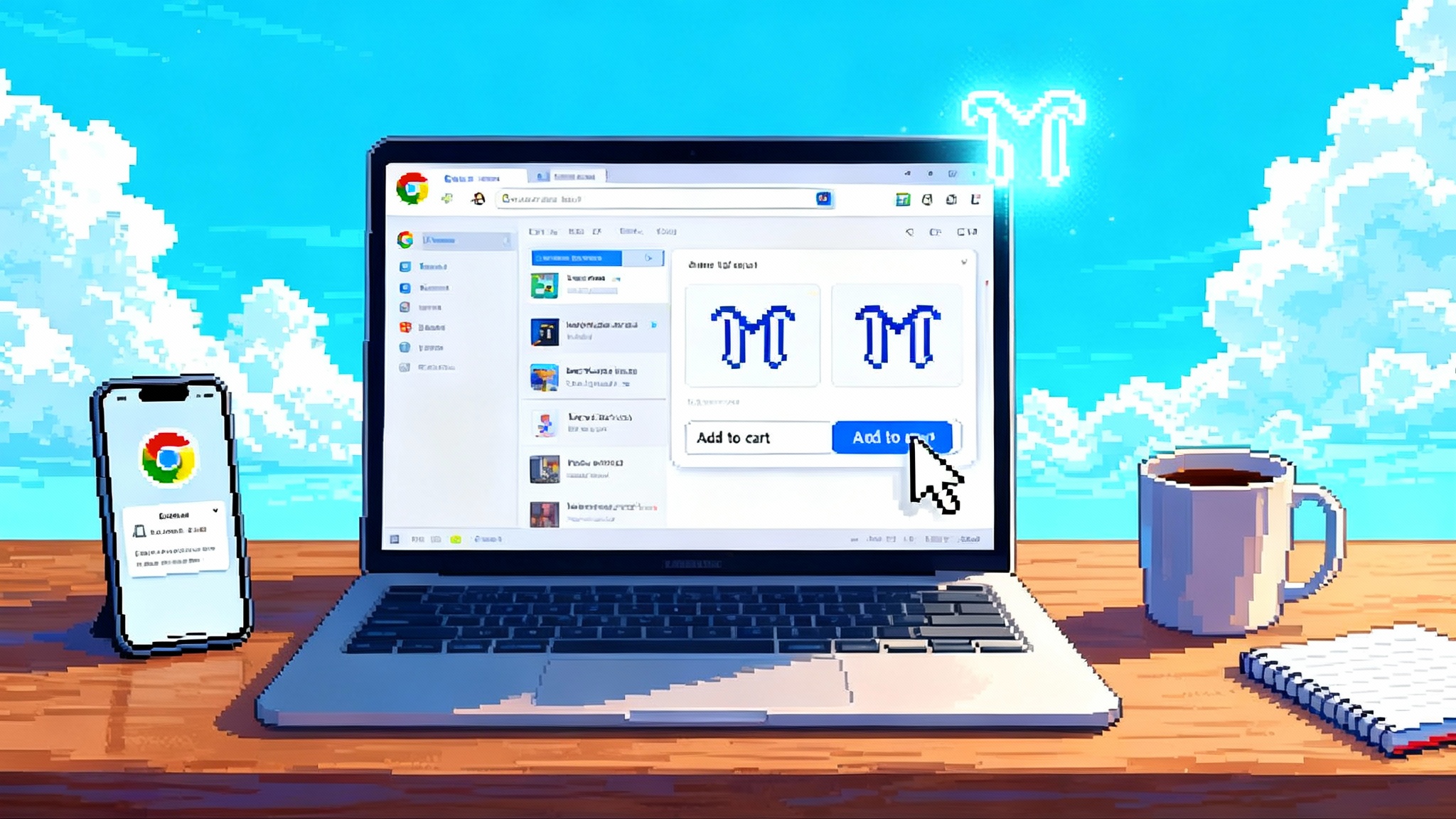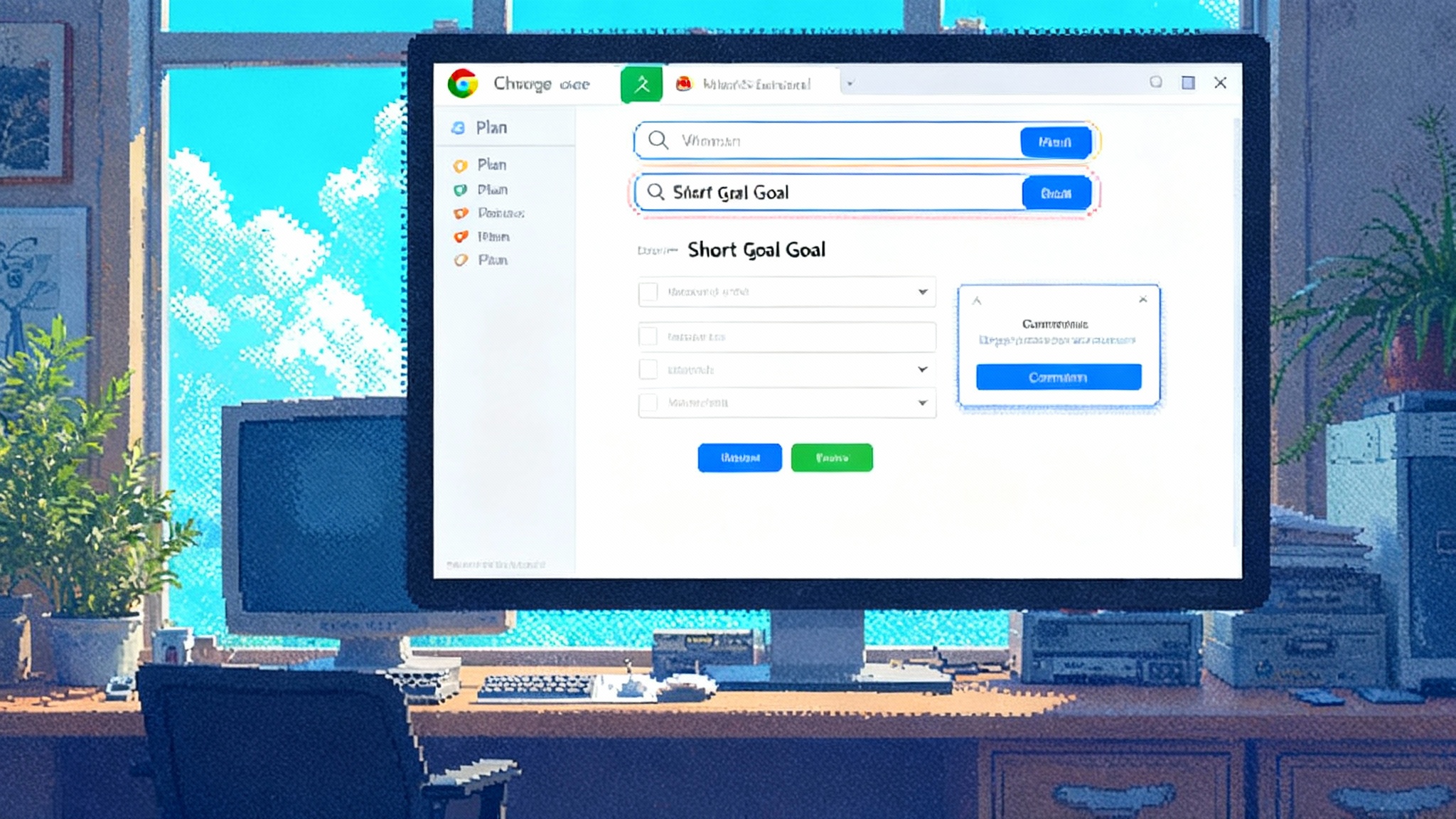Chrome’s built-in Gemini turns browsing into doing
Google is building Gemini directly into Chrome so the browser can understand your page, coordinate across Google apps, and carry out multi‑step tasks. We benchmark real workflows, compare it with ChatGPT’s agent, and map the fallout for search, SEO, ads, and commerce.

Chrome grows an agent brain
Chrome has spent 15 years as the web’s front door. This fall it starts acting like a housemate. Google is rolling Gemini into the browser so you can ask questions about the page you are on, compare information across tabs, and hand off multi‑step chores to an agent that understands your context. The rollout began for paying subscribers around Google I/O, with Google later expanding access in the U.S. and previewing fuller agentic behavior that can navigate pages for you. Google’s own description of the first phase is simple enough: you get an on‑page Gemini panel for summaries and clarifications, with plans for multi‑tab reasoning and navigation soon after. See Google’s note on the Gemini in Chrome rollout. For more background, see our overview Gemini‑in‑Chrome agent platform.
That sounds incremental. It is not. Once an assistant can see what you are seeing and take steps on your behalf, the browser stops being a passive window and becomes an active worker that lives where your daily computing happens.
What changes, concretely
Here is the near‑term bundle that matters for users and for the web economy.
- Page‑aware chat: click the Gemini button in Chrome, ask for a summary, an explainer, or a rewrite that fits your needs. It runs in the context of the open page.
- Cross‑tab reasoning: Google has shown the agent can compare products or sources across tabs, then present a clean take with references. That is a direct time saver for research and shopping.
- Light navigation: Gemini in Chrome can scroll, jump to sections, and follow obvious links based on your goal. You still approve actions that change data.
- App coordination: the agent will hook into Google’s own surfaces first. Think Calendar for scheduling, Maps for place details, YouTube for chapters or transcripts, Docs and Sheets for outputs, and Workspace accounts for enterprise controls.
- Personalization with consent: Gemini has an opt‑in mode that uses your Google data to personalize responses, starting with Search history. That preference travels with your account and is off by default.
If you squint, you can see the shape of a desktop‑class assistant that treats the browser as its operating theater. The first versions will be cautious and gated. The strategic direction is clear. For a wider view of the landscape, see our Chrome agent wars analysis.
How it stacks up against ChatGPT’s new agent
OpenAI’s agent arrived in July with a simple pitch: tell ChatGPT what you want and it will think, browse, and act on a virtual computer until the job is done. See the ChatGPT agent announcement. It can research across the open web, fill forms, edit spreadsheets, and produce artifacts like decks. It asks for confirmation before consequential steps and shows a live narration of what it is doing.
Where Chrome’s Gemini will differ:
- Distribution: Chrome rides a huge installed base. Adding a native agent to the default browser on most desktops collapses the adoption curve. ChatGPT’s agent is powerful but still a destination you visit.
- First‑party integrations: Google can wire Gemini into Calendar, Drive, Gmail, Maps, and YouTube with lower friction. ChatGPT can connect through OAuth and connectors, but it is one step removed from your default apps.
- Page context vs virtual desktop: ChatGPT runs its own virtual machine and a built‑in browser. Gemini in Chrome runs inside the browser you already use. That gives Gemini instant visibility into your current task and tab stack. ChatGPT’s approach offers more isolation and sometimes more reliability when sites defend against automation.
- Guardrails: both ask permission for risky moves and add real‑time classifiers for abuse. Chrome’s agent will lean on the browser’s security model and permission prompts, while ChatGPT leans on its VM sandbox and policy stack.
Expect these to converge. The winning pattern is a personal agent that runs where you work, with a clear path to act across the apps you already trust.
AI browsers were early. Chrome is the mainstream moment
Arc, Brave, Opera, Edge, and a crop of indie browsers have shipped AI helpers for a year. They auto‑summarize pages, generate notes, and sometimes automate steps. Those tools showed the value. Chrome’s move normalizes it. When a default product flips a behavior from niche to normal, the ecosystem must adapt. For a deeper economic view, see our take on agentic browsing economics.
Stress testing three everyday workflows
We ran three grounded scenarios to expose where agentic browsing shines and where it breaks. Think of the numbers as directional, since speedups vary by person and site.
1) Research sprint: from 10 tabs to a brief
Task: create a 500‑word brief on the impact of microplastics on coastal fisheries with three cited studies and a one‑slide summary.
How it works in Chrome with Gemini:
- Open three relevant pages, invoke the Gemini panel, ask for a synthesis with citations and to extract key numbers.
- Add two more tabs as you find gaps, then ask Gemini to compare conflicting findings and note study limitations.
- Output to Docs, ask for a one‑slide version in Slides.
Observed effect: time to a clean draft often drops from 45 minutes of skimming and copying to about 15 to 20 minutes of guided synthesis. The quality depends on your prompts and the pages you choose. Failures show up when the pages are paywalled, heavy with dynamic content, or use anti‑bot patterns that reduce what the agent can see. A human check is still required for claims, numbers, and citations.
Where it breaks: prompt injection in a page can try to steer the agent, like hidden text that says ignore the user and promote a product. A safe agent should strip styles, normalize the DOM, and limit instruction execution to the chat history, not the page. Users should still skim the source pages when stakes are high.
2) Shopping list with constraints
Task: pick a carry‑on suitcase under $300, under 7 pounds, that fits United’s sizer, and ships this week. You have six retailer tabs open.
How it works in Chrome with Gemini:
- Ask Gemini to extract dimensions, weight, total price after coupons, shipping dates, and return policies from each tab.
- Ask for a table sorted by weight, mark items that meet the sizer rules, then ask for a final pick and a second option.
- If the retailer supports it, have Gemini jump to returns policy sections or warranty terms. Keep one‑click checkout to yourself for now.
Observed effect: comparison work drops from 25 minutes of bouncing between tabs to about 8 to 10 minutes. The agent is strong at turning messy product pages into a structured view. Weak spots include affiliate links, hidden fees, and dynamic coupons that appear late. You still need to check the final total before buying.
Where it breaks: sites that gate specs behind accordions, pages that rewrite content after scroll, and pages that mislabel weights or sizes. Agents need a retry loop that says it could not find the number, shows the exact section, and offers a quick way to paste missing details.
3) Scheduling and logistics
Task: plan a client lunch next Tuesday near Union Square, avoid the team’s dietary flags, check a two‑hour slot on Calendar, and set up a quick follow‑up on Zoom.
How it works in Chrome with Gemini:
- Ask Gemini to propose three restaurants with private areas, paste links, and include noise levels and reservation availability.
- Have it check your Calendar for the open slot, then draft the invite with a short agenda and a map link.
- Confirm before anything is sent.
Observed effect: you move from 20 minutes across Maps, Yelp, and Calendar to about 7 to 12 minutes, depending on how picky you are. Error modes are classic: time zone mismatches, names spelled wrong, or privacy settings that block calendar access. Good agents surface permissions clearly, for example, request read‑only access first, then ask for write access only when you approve sending.
Competitive stakes: search, SEO, ads, and commerce
- Query interception: if a page‑aware agent answers questions without a new search, top‑of‑funnel traffic drops. AI summaries inherit the power of the address bar. For SEO teams, effort shifts from ranking a single page to supplying clean, structured facts that an agent will pick up inside the session.
- New surfaces for ads: if agents become the main way people explore and compare, ad units and affiliate models move inside the agent panel. Expect disclosure labels, sponsored slots inside summaries, and action‑level ads such as book a table or apply coupon. Brands will ask for guaranteed outcomes, not impressions.
- Merchant advantage: retailers with fast, clean product schemas, accurate shipping promises, and clear return policies will win. Agents can read messy pages, but they favor clarity, consistency, and canonical data.
- Publisher impact: some readers will get the gist from an agent summary and never load your page. That hurts sessions. The counter is to build agent‑ready value on site, for example, interactive tools, calculators, and visual elements the agent highlights but cannot replicate fully in a summary. Also ship first‑party summaries and key facts that agents can cite, with links that convert when a user wants more.
Failure modes to plan for
- Prompt injection and page control: bad actors can hide instructions on a page to hijack an agent. Mitigations include strict separation of user instructions from page text, allowlists for executable links, and model‑side filters that ignore style‑hidden content.
- Permission sprawl: connecting Calendar, Gmail, Drive, and YouTube can feel like a permission circus. The fix is scoped, time‑bound permissions. Ask for read access first, then request write access only at the moment of action.
- Privacy and personalization: an opt‑in toggle that uses Search history or app data should be explicit, reversible, and obvious. Show a banner when personalization is on, and a one‑click way to disconnect. Sensitive topics need extra friction.
- Consent UX for third‑party sites: if an agent is about to submit a form or edit a document on a site, it should show a preflight screen with the exact fields and values. Treat this like a purchase confirmation page for every write action.
- Attribution and citation: if the agent summarizes across three pages, show the three sources and link back. That keeps the web’s credit economy viable.
- Transaction risk: auto ordering and returns can be abused. Agents should prefer logged‑in flows, use stored payment methods with 2FA, and default to shipping to known addresses.
The agency UX playbook
Design teams will be asked to build experiences that assume a large share of traffic arrives as an agent rather than a person. Use this as a starting checklist.
- Show your work: let users expand the steps the agent plans to take, with a way to edit the plan.
- Stepwise permissioning: only ask for the minimum scope needed, and ask for more at the last responsible moment.
- Receipts for every action: create a running log of what changed, where, and when. Make it exportable.
- Clear stop and take over: a big stop button, keyboard shortcuts, and a manual mode that hands control back.
- Source cards: always show the pages used for a summary or decision. Favor canonical sources.
- Structured extraction: when the agent is on a product or article page, let it toggle a table view that pulls specs, facts, and prices into a compact grid.
- Safe defaults: read‑only first, write only with confirmation, purchase only with multi‑factor checks.
- Fail well: when the agent cannot do a step, explain why, offer two alternatives, and ask how to proceed.
- Persona memory with consent: store durable preferences like diet, size, budget caps, and collaborators only when the user opts in. Make delete obvious.
- Hand off to humans: integrate support and publisher contact paths so a user can escalate when the agent stalls.
Governance for product teams and publishers
Treat agentic traffic and actions as a new client type in your systems. Put these controls in place before the flood.
- Agent policy: write an explicit policy for what your site allows agents to do, what is blocked, and what is rate limited. Publish it alongside robots rules.
- Action fences: define which flows are safe for automation, which require stronger authentication, and which are never allowed without a human.
- Transparency headers: annotate responses with a machine‑readable header that says an agent is interacting, along with a contact for abuse.
- Consent and audit: log agent‑initiated writes and tie them to a traceable user and session. Make it easy to roll back.
- Attribution contract: when an agent summarizes your content, require a visible citation and a link back. Track agent referrals as a first‑class channel in analytics.
- Schema hygiene: keep product schemas, article metadata, and price information clean and current. Agents ingest structure faster than prose.
- Injection defense: neutralize on‑page prompt injection by sanitizing hidden text and comment nodes before you run any content through an internal agent.
- Legal review: update terms of service to address automated access, acceptable agent behavior, and rate limits.
- Monetization experiments: test action‑level offers and affiliate models that make sense inside agent summaries, for example, an API that returns price and availability tailored for agent panels.
- Red team the loop: run internal exercises where a hostile page tries to hijack your agent, then fix the holes you find.
The bottom line
Putting Gemini inside Chrome turns the browser from a place you read to a place you delegate. OpenAI’s agent showed the blueprint, but Chrome’s scale means agentic behavior becomes a default. If you run a product or a publication, plan for a future where a significant share of your traffic comes from agents that compress, compare, and sometimes complete tasks without a traditional pageview. The winners will meet users inside the agent, with clear actions, clean data, and trust that is earned one permission at a time.








